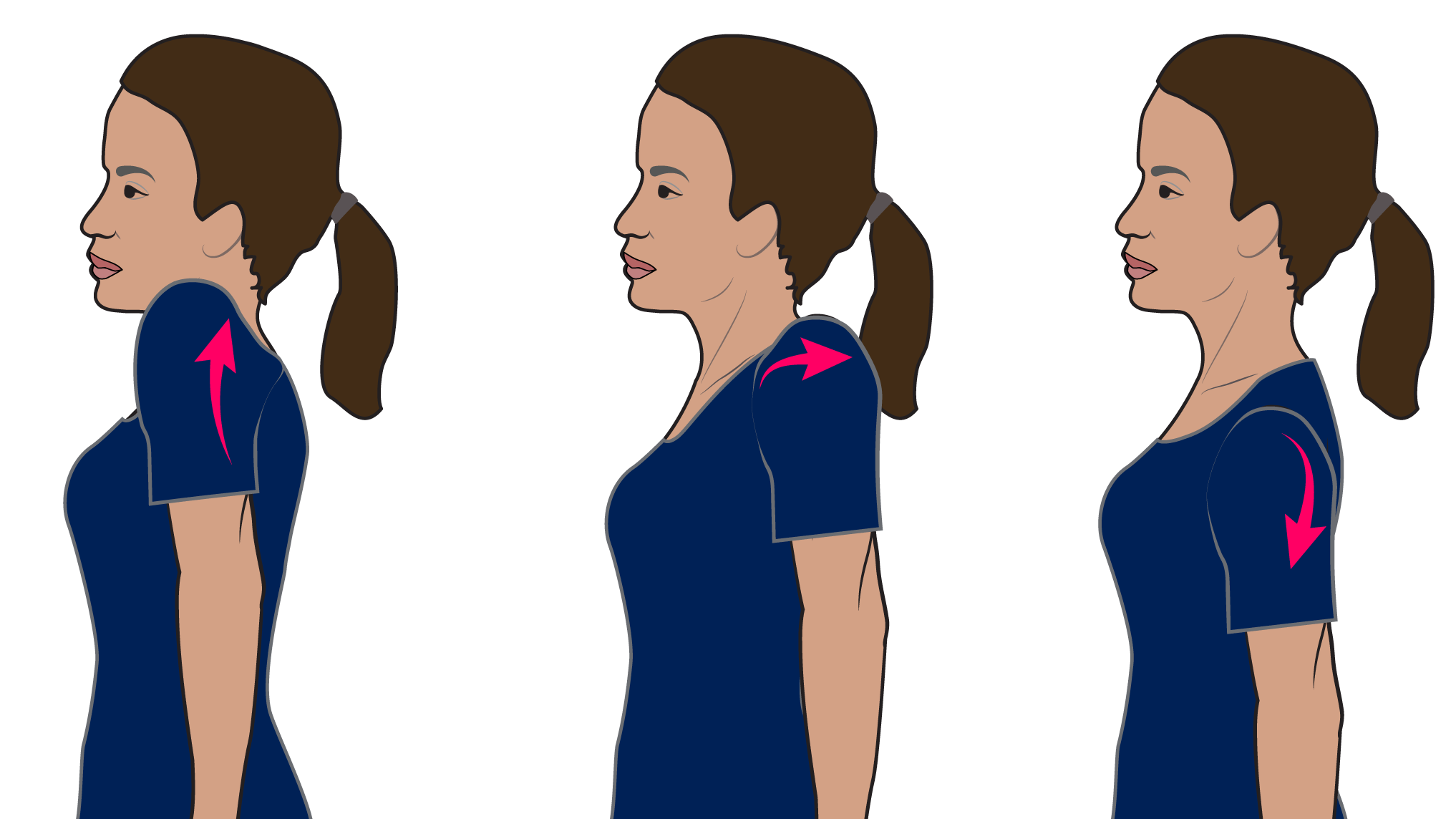
Introduction to Chronic Pain
Chronic pain in trigeminal neuralgia can be incredibly challenging to manage. A condition that causes sharp, shooting pain in the face, making it difficult for sufferers to enjoy their daily lives. While medications and surgical options exist, mind-body techniques can play a significant role in alleviating pain and improving overall well-being. In this article, we’ll explore a few effective mind-body techniques that may help individuals with trigeminal neuralgia find relief and enhance their quality of life.
Deep Breathing and Relaxation Techniques
Deep breathing and relaxation techniques are like secret weapons against the pain caused by trigeminal neuralgia. Diaphragmatic breathing means taking slow, deep breaths that help your body relax. Progressive muscle relaxation is like a friendly game with your muscles, where you tense and then release them to let go of tension. Guided imagery is when you use your imagination to visit a calm and happy place in your mind, which can make the pain feel less intense. These techniques are like superheroes that can give you some relief from trigeminal neuralgia, making it easier to cope with the pain.a
Diaphragmatic Breathing
Diaphragmatic breathing for trigeminal neuralgia is a simple but powerful technique that can help manage pain and reduce stress. This technique involves deep, slow breaths that engage the diaphragm muscle. Here’s how to do it:
- Find a comfortable sitting or lying position.
- Touch your chest and abdomen with one hand each.
- Inhale slowly through your nose, allowing your abdomen to rise as you fill your lungs.
- Exhale slowly through your mouth, letting go of tension.
Repeat this process for a few minutes, focusing on your breath and allowing it to calm your nervous system.
Progressive Muscle Relaxation
Progressive muscle relaxation for trigeminal neuralgia is another effective technique for managing pain and reducing tension in the body. It involves systematically tensing and relaxing different muscle groups. Here’s how to do it:
- Start with your toes, tensing them for a few seconds, then releasing.
- Gradually work your way up through your legs, torso, and arms, tensing and relaxing each muscle group.
- Pay attention to the sensation of relaxation as you release tension.
This technique can be significantly helpful when trigeminal neuralgia flares up and triggers muscle tension in response to pain.
Guided Imagery and Visualization
Guided imagery and visualization can transport your mind from pain into a peaceful, calming place. You can imagine a serene beach, a tranquil forest, or any place that brings comfort. Here’s how to do it:
- Find a quiet space and close your eyes.
- Take a few deep breaths to relax.
- Visualize a peaceful place in your mind, focusing on every detail.
- Imagine yourself there, experiencing the calm and relaxation.
These techniques are for alleviating chronic pain in trigeminal neuralgia and to promote a sense of well-being.
Meditation for Pain Management
Meditation is an effective tool for managing pain for trigeminal neuralgia. It’s like a mental exercise that can help your brain handle the pain better. When you practice mindfulness meditation, you focus on your breath and stay in the moment. It’s like training your mind to be stronger and more relaxed. Transcendental meditation uses a special word or phrase to help your mind find a peaceful state mentally. Loving-kindness meditation is about sending good thoughts and love to yourself and others. These meditations can help alleviate chronic pain in trigeminal neuralgia and make you feel smooth.
Mindfulness Meditation
Mindfulness meditation is a fantastic way to cope with the pain of trigeminal neuralgia. It’s like a mental workout that strengthens your ability to manage discomfort. During mindfulness meditation, you concentrate on your breath, focusing on the present moment. It’s a bit like teaching your mind to be more resilient and relaxed, helping you navigate the challenges of chronic pain. By practicing mindfulness for trigeminal neuralgia regularly, you can develop better pain management skills and a greater sense of calm, making it an essential tool.
Transcendental Meditation
Transcendental Meditation is a mind-body technique for trigeminal neuralgia. In this meditation, if you have a special word or phrase, repeat it to yourself. It’s like a secret code that helps your mind relax deeply. It’s as if you’re leaving behind the worries and stress of everyday life and going to a place where you feel really calm and happy. Transcendental Meditation can make you feel less stressed, help you deal with pain better, and make you feel better overall. It’s a great way to cope with trigeminal neuralgia in tough times.
Loving-Kindness Meditation
Loving-Kindness Meditation is like sending good thoughts and warm feelings to yourself and others. You say things for example, “I wish happiness and health for myself and everyone around me.” It’s like spreading positivity and kindness. This meditation can make you feel happier and more connected to others, which can be helpful when you’re dealing with trigeminal neuralgia. It’s like sharing a virtual hug with the world to make you feel better inside.
Yoga and Gentle Stretching Exercises
Yoga and gentle stretching exercises in trigeminal neuralgia offer soothing relief for those grappling with the discomfort. It’s akin to giving your body a little love and care. Through specific yoga poses, you can relax and stretch the muscles in your face and neck, providing relief from pain-related tension. Simple exercises like gentle neck stretches and rolling your shoulders can ease muscle tightness. Additionally, practices such as Tai Chi can help enhance your balance and reduce pain. These techniques promote relaxation, reduce pain, and improve your overall well-being, offering valuable support in your battle against trigeminal neuralgia’s challenges.
Yoga Poses for Facial Relaxation
Yoga offers a gentle way to stretch and relax the muscles of the face and neck, which can provide relief from trigeminal neuralgia pain. Try the following yoga poses:
Lion’s Breath:

Sit comfortably and take a deep breath in. As you exhale, open your mouth wide, stick out your tongue, and roar like a lion. Repeat a few times to release tension in the face.
Neck Rolls:

Gently roll your head in circles, first in one direction and then the other. Be mindful of any discomfort and avoid forcing the movement.
Child’s Pose:

Kneel on the floor, sit back on your heels, and stretch your arms forward, resting your forehead on the ground. This pose can help relax the neck and shoulders.
Neck and Shoulder Stretches
Neck and shoulder stretches can alleviate tension and discomfort in the upper body, which often accompanies trigeminal neuralgia. Here are a couple of stretches to try:
Neck Stretch:

Slowly tilt your head to one side, bringing your ear near your shoulder, to stretch your neck. Hold for a few seconds, then switch to the other side. Repeat on each side a couple of times.
Shoulder Roll:

Roll your shoulders in a circular motion, both forwards and backwards. This can help relieve tension in the shoulder muscles.
Tai Chi for Balance and Pain Relief

Tai Chi, often described as “meditation in motion,” provides a unique blend of balance enhancement and pain relief, making it a remarkable choice for those grappling with trigeminal neuralgia. It resembles a serene, slow-motion performance that gently guides your body. Tai Chi’s fluid movements bolster your balance and stability and also help ease pain and discomfort. It’s like a tranquil river flowing through your body, washing away tension and promoting a profound state of well-being. Tai Chi’s distinctive approach to pain management can offer solace and support that complements other strategies in your journey to ease the challenges of trigeminal neuralgia
Biofeedback and Neurofeedback
Biofeedback and neurofeedback are like personalized roadmaps to navigate the challenges of trigeminal neuralgia. Think of biofeedback as a dashboard for your body, providing real-time data on functions like muscle tension and heart rate. It empowers you to make adjustments, like a skilled pilot steering an aircraft. Now, neurofeedback delves into the realm of your brain’s electrical activity, offering insights and training opportunities. These tools serve as your unique companions, helping you reduce stress, refine your pain management strategies, and enhance your overall well-being. They are the compasses guiding you toward a better quality of life despite the hurdles of trigeminal neuralgia.
Understanding Biofeedback
Biofeedback is akin to having a conversation with your body, and vitals for managing conditions like trigeminal neuralgia. Sensors monitor aspects like muscle tension and heart rate, translating your body’s signals into visual data. This real-time feedback is like deciphering a unique language your body speaks. By understanding these signals, you can consciously control functions to reduce stress and pain. Biofeedback empowers you to have a meaningful dialogue with your body, enhancing your ability to manage trigeminal neuralgia and improve overall well-being.
Neurofeedback Techniques
Neurofeedback techniques are like brain exercises that can be incredibly helpful for managing conditions like trigeminal neuralgia. They involve monitoring your brain’s electrical activity using sensors and providing real-time feedback. Think of it as a personal trainer for your brain, helping you improve its functioning. Training your brain to work more efficiently and calmly, neurofeedback can reduce stress, enhance pain management, and improve overall well-being. It’s like giving your brain a workout to help you better cope with the challenges of trigeminal neuralgia, ultimately leading to a better quality of life.
The journey to alleviate chronic pain in trigeminal neuralgia is multifaceted, and mind-body techniques play a crucial role. Deep breathing, meditation, yoga, stretching, and advanced approaches like biofeedback and neurofeedback offer diverse avenues for managing pain and enhancing overall well-being. These techniques empower individuals to cultivate resilience, reduce stress, and regain control over their bodies and minds. While each person’s experience with trigeminal neuralgia in Mumbai is unique, integrating these mind-body practices into a personalized pain management plan can provide meaningful relief and improve the quality of life for those facing this challenging condition.
Best Trigeminal Neuralgia Clinic in Mumbai
The Department of Neurological Surgery at Jaslok Hospital proudly stands as the premier trigeminal neuralgia clinic in Mumbai. With a team of highly skilled neurosurgeons and state-of-the-art technology, this specialized trigeminal neuralgia clinic in Mumbai offers exceptional care for those suffering from trigeminal neuralgia, a severe facial pain condition. Their expertise lies in precise surgical interventions, including microvascular decompression (MVD), which provides lasting relief from excruciating pain. Jaslok Hospital’s unwavering dedication to research and patient well-being establishes it as the top choice for individuals seeking effective solutions to combat trigeminal neuralgia in Mumbai. Trust in their excellence for comprehensive and compassionate care.
#mind-body-techniques #yoga-therapy

